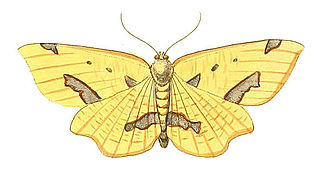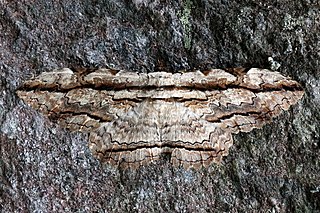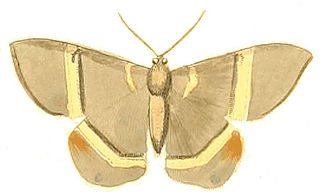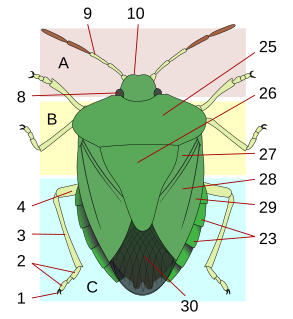
Are is a genus of moths in the subfamily Arctiinae. The type species is Are druryi, which is found on Jamaica. This species was described by Dru Drury in 1773 under the name Phalaena marginata, but this name is preoccupied by Phalaena marginata Linnaeus, 1758 and a new specific epithet, honouring Drury, was assigned in 1986.

Dactyloceras lucina is a species of very large moth of the family Brahmaeidae. It is found in central and west Africa, where it has been recorded from Equatorial Guinea, Ghana, Ivory Coast, Kenya, Sierra Leone, Uganda and Zambia. The species was first described by Dru Drury in 1782.

Ceretes thais is a moth in the Castniidae family. It is found in Brazil. Superficially it looks very like a butterfly, and was originally placed by Dru Drury in the "Papilio " group which mostly corresponds with modern Nymphalidae.

Yramea cytheris is a species of butterfly in the family Nymphalidae. It was first described by Dru Drury in 1773 from the Falkland Islands. In some systems it is included in genus Issoria.

Greta diaphanus, the Antillean clearwing, is a species of clearwing (ithomiine) butterflies, named by Dru Drury in 1773.

Pitthea famula is a species of moth in the family Geometridae. It was first described by Dru Drury in 1773 from Calabar, in what is now Nigeria. It is found in Angola, Benin, Cameroon, the Republic of Congo, the Democratic Republic of Congo, Equatorial Guinea (Bioko), Nigeria, Sierra Leone and Zambia.

Imbrasia epimethea is a species of moth belonging to the family Saturniidae. It was first described by Dru Drury in 1773 from the Calabar coast.

Crameria amabilis is a species of moth of the Noctuidae family, the only species currently placed in the genus CrameriaHübner, [1819]. It was first described by Dru Drury in 1773 from the coast of Guinea.

Lucinia cadma is a species of brush-footed butterfly. It was first described by Dru Drury in 1773 from Jamaica. Distinct subspecies are found on other Caribbean islands.

Epimecis scolopaiae is a species of moth in the family Geometridae, subfamily Ennominae. It was first described by Dru Drury in 1773 from Jamaica.

Xanthotype sospeta, the crocus geometer, is a species of moth in the family Geometridae. It was first described by Dru Drury in 1773 from Jamaica. It is also found in North America, where it has been recorded from Nova Scotia to southern British Columbia, south to Colorado and Georgia. The habitat consists of deciduous and mixedwood forests.

Letis hercyna is a species of moth in the Erebidae family. It was first described by Dru Drury in 1773 from Jamaica.

Otroeda cafra is a species of moth in the tussock-moth subfamily Lymantriinae. It was first described by Dru Drury in 1782 from Sierra Leone, and is also found in Cameroon, DR Congo, Malawi, and Nigeria.

Pseudobunaea alinda is a species of very large moths in the family Saturniidae. The species was first described by Dru Drury in 1782, and is found in Angola, Cameroon, Congo, DR Congo, Gabon, Guinea, Ivory Coast, Sierra Leone, and Tanzania.

Melinoessa fulvescens is a species of moth in the family Geometridae, native to Sierra Leone and Gambia. It was described by Dru Drury in 1782 as Phalaena fulvata, a name which was pre-occupied. The current, slightly different, specific name was given by L. B. Prout in 1916.

Zamarada eucharis is a species of moth in the family Geometridae. It was first described by Dru Drury in 1782, from Brazil.

Pierella nereis is a butterfly species from the subfamily Satyrinae in the family Nymphalidae. It was first described by Dru Drury in 1782 from Brazil.

Thysania zenobia, the owl moth, is a species of moth in the Erebidae family. The species was first described by Pieter Cramer in 1776, and is native to North and South America and the Caribbean.

Phrygionis argentata is a species of moth in the family Geometridae. It was first described by Dru Drury in 1773 from Jamaica.

Lyssa patroclus is a species of moth in the family Uraniidae. The species was described by Linnaeus in 1758 from the Moluccas.























